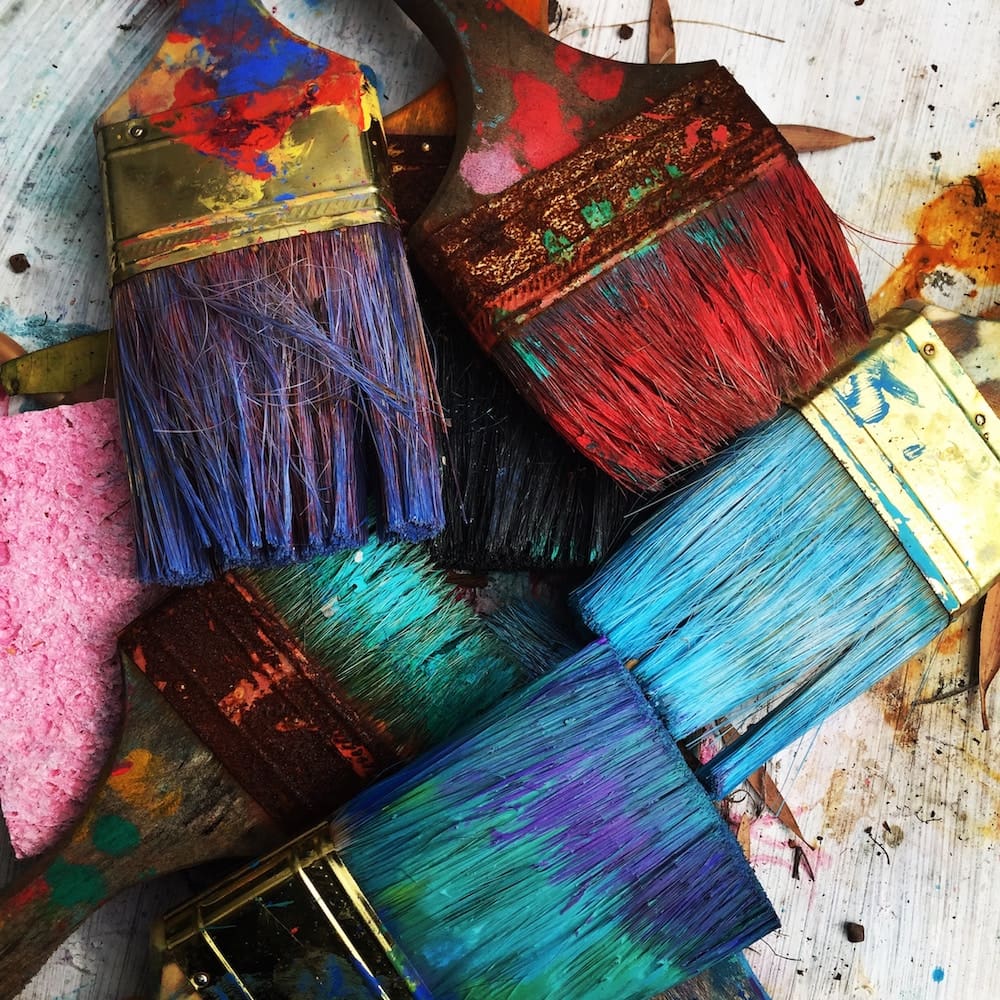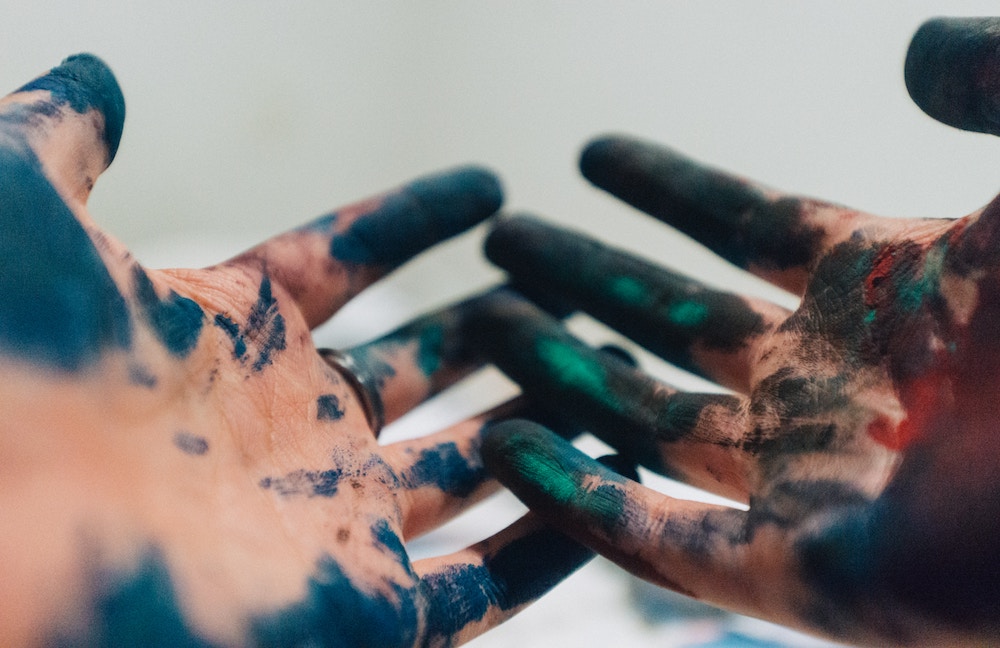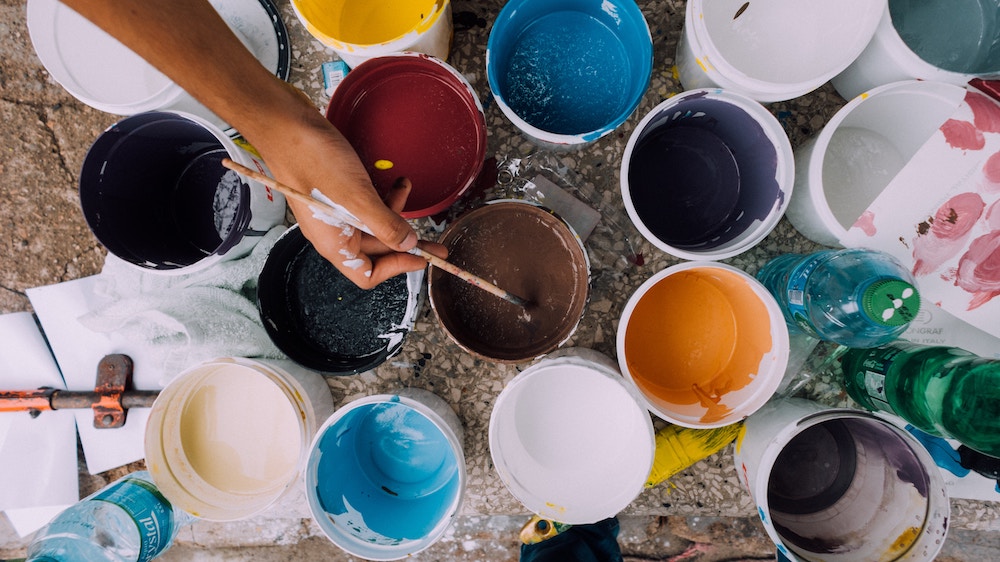Creativity is one way in which we can create a happier, and a more fulfilled life, so why not dive in?

The progress made in 2017 in terms of the way that we think and talk about mental health has been fantastic. With charities such as Heads Together bringing together a number of mental health charities in a concerted effort to tackle well-being of our nation, under an integrated platform, and the vocalisation of mental health issues by the Royal Family has been a huge step forward to make people sit up and take notice. It has also made people realise that it is OK to seek help, it is perfectly fine to speak out when things are not good, and it is neither pathetic nor a sign of weakness to ask for help. We are also realising that it is extremely important to look after ourselves. Self-care is not selfish. On the contrary, it is a selfless thing to do, as we cannot look after others unless and until we take measures to look after our mental well-being every day.
Creativity is one such way in which we can create a happier, and a more fulfilled life. It is a form of mindfulness, as engaging in some form of creative activity creates focus, a state of ‘flow’ which is a complete immersive-ness in an activity, and results in a state of clarity, and a sense of serenity. A recent research study also showed that creativity creates happiness and a higher positive effect. The study also found out that the participants were more energetic the day after having carried out a creative activity, and it was like a domino effect, inspiring more creativity. There is definitely a case for incorporating creativity in our daily lives as a way to look after our mental health and well-being.
Creativity creates happiness, and here’s how we can make it a part of our everyday lives:

Make creativity a daily habit. Create a corner which helps you imagine, relax, and dream; all key to a creative session. Even though our lives are so busy, it is good to carve out some time everyday for daydreaming. Even 10 minutes will help. Solitude has been shown to be one of the most fertile grounds for inspiring creativity by shutting out all the distracting noise, instead making the brain more engaged on one particular activity. Warm up by doodling and letting the brain re-engage, and be fired for creating and imagining.
Children are more spontaneous and research has found that even by the age of twelve, they have become much more critical of their own creative efforts. As adults, we impose self-edits and talk ourselves out of doing things that we feel that we might not excel at. It is important to just go ‘with the flow’ when it comes to starting a creative journey. Do not expect perfection. Instead try and find a sweet spot between challenge and ease, where your skills match what you trying to do, but is stimulating enough so that it is not easy to get bored. Focus on the process of creation rather than the end result.
![]()
Creativity is all about trying an activity that engages your brain and your interest. Often we do not find that one creative pursuit easily which can do both these things and help us relax at the same time. Therefore, it is important to not be afraid of trying a range of things. Writing, painting, coding use different skills but all use creative thinking in some form. Find the one that works for you. Creativity is creating something new and interesting every day. Try and find ways to engage with the world around you by setting yourself challenges. Photographing all the street signs in your neighbourhood, imagining shapes in clouds, drawing without lifting your pencil off the paper are all ways to do normal creative things in an interesting manner.
Getting down and dirty is really key to engaging your senses and letting the creative juices flow. We tend to spend so much time in front of screens and on our electronic devices that the importance of our tactile senses can sometimes be forgotten. Gardening, cooking, making bread are all activities that can inspire creative connections in your brain. Using your hand uses a completely different set of connections in the brains as opposed to typing. So keep a pad handy, and make lists or write down a ‘someday’ list to start imagining and creating a happier future. Start sketching with a pencil rather than digitally. Even scribbling helps.

Creative inspiration can come from the seemingly mundane everyday life around us. We just have to change our perspective and learn to look with our mind rather than just our eyes. Go for a walk and keep that phone away. Be curious, explore and investigate. Ask questions and try and find out more about where you live and the world around you. Draw an apple using different techniques, or create something fun out of any objects just lying around on your desk. It is about looking at the normal with new eyes, and really observing tiny details, stretching our imagination and reimagining the uses.
It is important to be flexible, and open-minded when making creativity a part of your daily life. Creative thinking is not something that some people are inherently born with. It is a skill that can be developed through daily practice. It can become a way of life; a way of looking at problems in an interesting and novel way. Explore and let the serendipitous moments spark the inspiration that you seek. It will be a huge step forward in taking responsibility for our mental health and well-being.


Comments